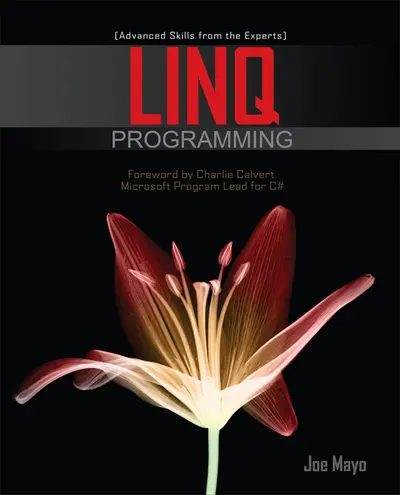My Account Details

ISBN10: 0071597832 | ISBN13: 9780071597838

Step 1 . Download Adobe Digital Editions to your PC or Mac desktop/laptop.
Step 2. Register and authorize your Adobe ID (optional). To access your eBook on multiple devices, first create an Adobe ID at account.adobe.com. Then, open Adobe Digital Editions, go to the Help menu, and select "Authorize Computer" to link your Adobe ID.
Step 3. Open Your eBook. Use Adobe Digital Editions to open the file. If the eBook doesn’t open, contact customer service for assistance.
Publisher's Note: Products purchased from Third Party sellers are not guaranteed by the publisher for quality, authenticity, or access to any online entitlements included with the product. Take your LINQ programming skills to the top tier Resolve data format impedance mismatch with guidance from a C# expert and Microsoft MVP. LINQ Programming details cutting-edge techniques to effectively assimilate XML, SQL, ADO.NET, and unstructured data sources. Build powerful LINQ queries, handle hierarchical and relational data, use lambdas and expression trees, and develop multi-threaded applications. Get proven strategies for handling conflicts and exceptions and creating custom extension methods. Additionally, you'll learn how to create your own LINQ provider through a working example, LINQ to Twitter. Filter, order, and group code using LINQ to Objects Query relational and unstructured data with LINQ to SQL and LINQ to XML Work with ADO.NET through LINQ to DataSet Deploy object-oriented programming techniques and LINQ to Entities Read, manipulate, and create C#-based XML documents Generate DBML and external mapping files with SqlMetal Create custom lambdas, expressions, providers, and extensions Support concurrent processing and multi-threading using PLINQ Build a custom LINQ provider for working with any data source
Acknowledgments
Introduction
Part I - LINQ Essentials
Chapter 1 - Introduction to LINQ
Chapter 2 - Using LINQ to Objects
Chapter 3 - Handling LINQ to SQL with Visual Studio
Part II - LINQ to any Data Source
Chapter 4 - Working with ADO.NET through LINQ to DataSet
Chapter 5 - Programming Objects with LINQ to Entities
Chapter 6 - Managing Hierarchical Data with LINQ to XML
Chapter 7 - Automatically Generating LINQ to SQL Code with SqlMetal
Part III - Extending LINQ
Chapter 8 - Digging Into Expression Trees and Lambdas
Chapter 9 - Constructing New Code with Extension Methods
Chapter 10 - Building a Custom LINQ Provider--Introducing LINQ to Twitter
Chapter 11 - Designing Applications with LINQ
Chapter 12 - Concurrent Programming with Parallel LINQ (PLINQ)
Appendix A - Standard Query Operator Reference
Index
Need support? We're here to help - Get real-world support and resources every step of the way.